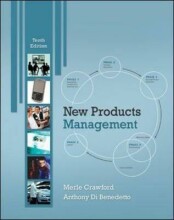Summary: 1Bv20 - Business Information Systems Management
- This + 400k other summaries
- A unique study and practice tool
- Never study anything twice again
- Get the grades you hope for
- 100% sure, 100% understanding
Read the summary and the most important questions on 1BV20 - Business information systems management
-
1 Lecture 1
This is a preview. There are 9 more flashcards available for chapter 1
Show more cards here -
Why do organizations build IS?
To improve their efficiency and effectiveness -
First order change: (process <-> technology)
- Influences the technical system
- Occurs when a new IT is introduced that modifies how an existing process is performed
- Easiest to manage
- Influences the technical system
-
Second order change: Informate (people, tech, process)
- Influences the people component
- The way individuals perform processes and the manner in which they interact with the technology change
- Key challenges:
- Try to overcome the human tendency to resist change
- Provide appropriate training
- Influences the people component
-
Third order change: Transform (All)
- Influences the structure component
- Technology -> a change in the way the organization selects, uses and manages technology
- People -> a change in the reporting and authority structure
- Process -> a novel way of task accomplishment or a new set of task
- Most challenging (much managerial involvement)
-
2 Lecture 2: EIS architecture
-
What is EIS architecture?
High-level blueprint of an EIS (including the relationship between all IS components of IT, people, process and structure) that serves to understand its internal structure to aid in its design, redesign, configuration and maintenance. -
What are the typical styles to represent EIS architecture?
- Columned style: Defines the structure of the EIS by organizing functionality into several functional ‘subareas’ (the columns) at the same level of functional abstraction. E.g., HR, finance, logistics, …
- Layered style: Defines the structure of the EIS by organizing functionality into several layers of abstraction. E.g.: 4-tier, 3-tier or multi-tier in general.
- Component-Oriented style: Defines the structure of the EIS by grouping coherent application functionality into components with explicit interfaces. E.g., Service-Oriented Architecture – SOA, Object-Oriented, …
-
2.2.1 Customer relationship management (CRM)
This is a preview. There are 4 more flashcards available for chapter 2.2.1
Show more cards here -
What are the key components in CRM?
- Operational CRM
- Analytical CRM
- Executive CRM
- Operational CRM
-
2.3 4-tier EIS Architecture
This is a preview. There are 4 more flashcards available for chapter 2.3
Show more cards here -
What is the 4-tier architecture?
This architecture applies the separation of concerns principle. Things that belong together should be put together as much as possible and things should be mixed as little as possible with other things. - It consist out of 4 tiers that interact with each other and an authorization tier -
Tier 1: Data logic
Contains the database for storage of business objects and the logic that implements the basic operations on the data that is used by the function logic tier.
The data access logic implements the basic data operations on the business objects -
Tier 2: Function logic
Handles individual business functions that an EIS supports. This includes related business rules and data validation. Almost all functions are derived of CRUDL operations (create/read/update/delete/list)
- Higher grades + faster learning
- Never study anything twice
- 100% sure, 100% understanding































